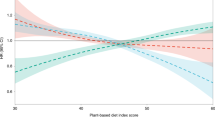Abstract
Objective: Field studies of twentieth century hunter-gathers (HG) showed them to be generally free of the signs and symptoms of cardiovascular disease (CVD). Consequently, the characterization of HG diets may have important implications in designing therapeutic diets that reduce the risk for CVD in Westernized societies. Based upon limited ethnographic data (n=58 HG societies) and a single quantitative dietary study, it has been commonly inferred that gathered plant foods provided the dominant energy source in HG diets.
Method and Results: In this review we have analyzed the 13 known quantitative dietary studies of HG and demonstrate that animal food actually provided the dominant (65%) energy source, while gathered plant foods comprised the remainder (35%). This data is consistent with a more recent, comprehensive review of the entire ethnographic data (n=229 HG societies) that showed the mean subsistence dependence upon gathered plant foods was 32%, whereas it was 68% for animal foods. Other evidence, including isotopic analyses of Paleolithic hominid collagen tissue, reductions in hominid gut size, low activity levels of certain enzymes, and optimal foraging data all point toward a long history of meat-based diets in our species. Because increasing meat consumption in Western diets is frequently associated with increased risk for CVD mortality, it is seemingly paradoxical that HG societies, who consume the majority of their energy from animal food, have been shown to be relatively free of the signs and symptoms of CVD.
Conclusion: The high reliance upon animal-based foods would not have necessarily elicited unfavorable blood lipid profiles because of the hypolipidemic effects of high dietary protein (19–35% energy) and the relatively low level of dietary carbohydrate (22–40% energy). Although fat intake (28–58% energy) would have been similar to or higher than that found in Western diets, it is likely that important qualitative differences in fat intake, including relatively high levels of MUFA and PUFA and a lower ω-6/ω-3 fatty acid ratio, would have served to inhibit the development of CVD. Other dietary characteristics including high intakes of antioxidants, fiber, vitamins and phytochemicals along with a low salt intake may have operated synergistically with lifestyle characteristics (more exercise, less stress and no smoking) to further deter the development of CVD.
This is a preview of subscription content, access via your institution
Access options
Subscribe to this journal
Receive 12 print issues and online access
$259.00 per year
only $21.58 per issue
Buy this article
- Purchase on SpringerLink
- Instant access to full article PDF
Prices may be subject to local taxes which are calculated during checkout
Similar content being viewed by others
Author information
Authors and Affiliations
Corresponding author
Rights and permissions
About this article
Cite this article
Cordain, L., Eaton, S., Miller, J. et al. The paradoxical nature of hunter-gatherer diets: meat-based, yet non-atherogenic. Eur J Clin Nutr 56 (Suppl 1), S42–S52 (2002). https://doi.org/10.1038/sj.ejcn.1601353
Published:
Issue Date:
DOI: https://doi.org/10.1038/sj.ejcn.1601353
Keywords
This article is cited by
-
Fermentation technology as a driver of human brain expansion
Communications Biology (2023)
-
13,000 years of sociocultural plant use in the Atacama Desert of northern Chile
Vegetation History and Archaeobotany (2021)
-
Livestock policy for sustainable development
Nature Food (2020)
-
Influence of Paleolithic diet on anthropometric markers in chronic diseases: systematic review and meta-analysis
Nutrition Journal (2019)


